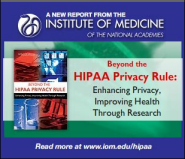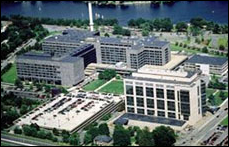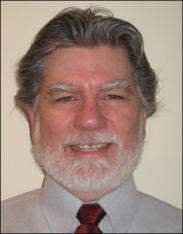News 2/5/09
West Memphis, AR police call Wednesday’s car bombing of the chair of the state’s medical board a terrorist attack. A bomb was placed in or near the Lexus SUV of family practice physician Trent Pierce MD, which exploded in his driveway. He’s in critical condition.
The VA’s MyHealtheVet PHR wins the best PHR ward at TEPRs. The top "Hot Product" award went to the Private Access suite of solutions.
RelayHealth launches a new insurance payment reconciliation service for healthcare providers. RelayReconcile Payment Services converts paper EOBs into electronic remittance advice (ERA) files, and then reconciles the ERAs with bank deposits. Providers are able to automatically post payments to their patient accounting system.
A Reno federal judge rules that state laws and the federal privacy act do not prevent the questioning of a doctor of someone involved in a lawsuit. The case involves a wrongful death suit against a pharmaceutical company. The pharma lawyer calls the ruling a "dangerous precedent" that violates Nevada’s privacy rules. The ruling might end up in appeals court.
A group planning to rate doctors using their individual Medicare data is thwarted when an appeals court overturns an earlier warning that required the federal government to turn the data over.
Henry Backe, MD tells the Senate Banking Committee that his practice’s retirement fund lost $11.6 million as a result of the alleged Ponzi scheme run by Bernard Madoff. Fifteen physicians and 125 staff members from the Orthopaedic Specialty Group (CT) will likely recover a mere $500,000 of their total investment.
iPhone now offers 745 different applications in its healthcare and fitness categories. Inga’s kind of geeky about variety of applications available, which include calorie counters, pedometers, and blood pressure trackers. For $49.99 you can also purchase My Life Record PHR. It looks cool, but when we decide to actually use a PHR, we’ll probably go with one of the freebies.
A Kansas doctor accused in 59 overdose deaths is found to be connected to Cephalon, makers of the Actiq fentanyl lollipop. The company was charged with over-marketing the highly addictive drug for routine conditions such as headaches and paid $425 million in settlements and fines. One of the doctor’s patients died of fentanyl intoxication; the family is suing the doctor and the drug company.
And, speaking of PHRs: User Centric releases the results of an independent study comparing the usability of Google Health and Microsoft Health Vault. The 30 participants preferred Google Health, finding its navigation and data entry was easier and utilized more familiar medical terminology.
Humana becomes the first insurance company to support MGMA’s Project SwipeIT, a standard, rigid, machine-readable insurance card that could save up to $1 billion per year.
An osteopathic surgeon who generated 125 medical malpractice lawsuits over a seven-month period files a $50 million lawsuit against his lawyer. John A. King, DO claims his attorney is guilty of negligence, legal malpractice, and breach of contract. King apparently has an extensive history of suing hospitals who terminated his privileges, medical boards who took away his licenses, and lawyers he hired to represent him. Wow. How did he have time to practice medicine?
Both the American Academy of Family Physicians and the American College of Physicians are encouraging lawmakers to support healthcare in any economic stimulus package. Among other projects, the organizations are recommending support for HIT initiatives.
An Allscripts survey finds that physician groups are overwhelmingly happy to take federal stimulus money to use toward EHR adoption. Less consensus was found in what form the payments should take — being paid to buy EHRs or being paid to use them. Two-third of doctors said they would participate in a pay-for-purchase program, and not surprisingly, practices that already have EHRs think Uncle Sam should reimburse them retroactively. Survey flaws: only 15% of the respondents were actual providers; the rest were administrative staff. EHR users made up 60% of those surveyed, far outpacing overall adoption. And, the response rate was less than four percent. That’s not a criticism of the survey, just the usual cautions about drawing conclusions from it.
A new Institute of Medicine study concludes that the existing HIPAA privacy rule does not protect privacy as well as it should. Also, as currently implemented, HIPAA impedes health research.
Cielo MedSolutions announces a 300% year-on-year increase in revenues in 2008 and a 400% increase in its client base. Cielo, started in 2005, provides clinical management systems to help ambulatory care providers improve, document, and report on clinical care initiatives.
Now that Daschle is out as HHS secretary candidate, will HIMSS withdraw its formal (as opposed to informal?) letter of support?
An AHRQ report finds that patients who clearly understand after-hospital care instructions are 30% less likely to be re-admitted or visit the ER. Also, costs for hospitalization and outpatient expenses are, on average, $412 lower for patients who receive complete information.
The Texas State Attorney General charges a now-defunct imaging center for failing to retain mammogram results and copies of patient records for the required minimum for five years (or 10 years if no additional mammograms are performed at the facility). Central Imaging Center in Brownsville sold a large number of old screening films to a silver refinery business. The imaging center’s owner is now faced with penalties of up to $25,000 for each violation. (Inga is obsessing over the possibility that her silver jewelry may have once been a breast x-ray.)
Our HIStalkPractice readership continues to climb higher every week, so thanks for reading. Feel free to sign up for e-mail updates if you haven’t already – just put your e-mail address in the Get Instant Updates box to your upper right. We already have several sponsor commitments (thanks!) and will continue offering introductory rates through the end of February. Contact Inga to learn more.












The article about Pediatric Associates in CA has a nugget with a potentially outsized impact: the implication that VFC vaccines…